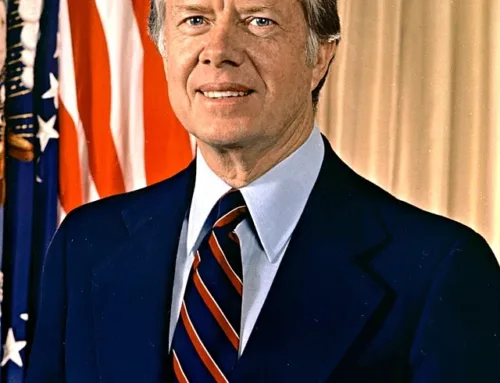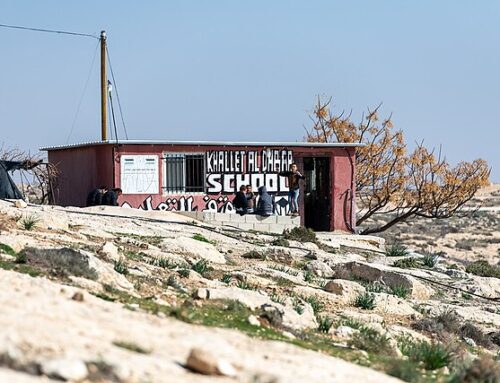This is the first in a series of essays by Gidon D. Remba, which explores different facets of Israel’s predicament through a critical encounter with the work of Ari Shavit. (You may enter Shavit’s name in the upper corner search window for other discussions at this blog of Shavit’s views.) See Mr. Remba’s bio at the bottom of this post:
With a heavy heart and a sharp ear, I went recently to hear Ari Shavit, the “centrist” Ha’aretz columnist and celebrated
author of My Promised Land: The Triumph and Tragedy of Israel, when he appeared in New York City at the Other Israel Film Festival. [Click here for a brief report on this event.] Like many others, I had found the book to be lyrically written, a love story and a thriller, an ode to Israel. But I was greatly troubled that nearly all the gushing reviews in the mainstream media had overlooked its gaping flaws.(1)
Critical reviews, much needed antidotes, abounded in places like The New York Review of Books, +972 Magazine, Ha’aretz and Dissent, but were nowhere to be found in more widely read publications like The New York Times Book Review, or even the Atlantic and The New Republic. New Yorker editor David Remnick dubbed it “the most extraordinary book” on Israel in decades. Closer to the mark, Noam Sheizaf, writing in +972 Magazine, rightly called it a “conservative manifesto” that “views the conflict with the Palestinians as a zero-sum game that can’t really be solved.” Nathan Thrall marveled in The London Review of Books at how often Shavit has served as a “mouthpiece for [the views of] Netanyahu,” yet in the U.S. his book was packaged, strangely, as a “liberal Zionist” manifesto – much to the dismay of many actual American Jewish liberal Zionists. Jerome Slater argued persuasively on his blog that “what is wrong about My Promised Land is far more important than what is right, and for that reason it is a dangerous and, indeed, unforgivable book.” But precious few Americans, or American Jews, read their critiques, or even know they exist.
In what follows, I highlight key flaws in the book, and then critically assess Shavit’s proposal for a third way, a new path forward for Israel.
Tragedy’s Triumph
A yawning pessimism born of the fear that Israel cannot survive its contradictions runs through Shavit’s book, which opens with the question: “Are we Israelis caught in a hopeless tragedy, or might we yet revive ourselves and save ourselves and salvage the land we so love?” By the end of his journey, Shavit announces that “There was hope for peace, but there will be no peace here. There was hope for quiet, but there will be no quiet here. Not in this generation. The foundations of the home we founded are somewhat shaky and repeated earthquakes rattle it…What [Israel] has to offer is not security or well-being or peace of mind. What it has to offer is the intensity of life on the edge. The adrenaline rush of living dangerously, living lustfully, living to the extreme.”(2)
Rabbi Andrea London, a dear friend and colleague from Chicago, was among the all-too-few rabbis across the country who spoke with candor and insight in their Yom Kippur sermons about Israel, and who, unwilling to surrender to counsels of despair, challenged her congregants, and all American Jews, to renew their commitment to an authentic liberal Zionism, to the fight for equality and peace in Israel. Calling Shavit’s vision of Israel “baffling,” Rabbi London wondered “how many people in the south of Israel regarded this past August [during the war with Hamas in Gaza, the third in five years] as thrilling. Or during Israel’s war with Lebanon in 2006, as missiles rained down on much of Israel’s north. Moreover,” she continued, “Shavit’s notion that we should accept Israel as a do-or-die adventure with no end to the hostilities in sight is both morally troubling and, as I will argue in due course, a recipe for disaster.”(3)
Few have lost money betting against the outbreak of peace in the Middle East. But Shavit’s book, and its generally uncritical reception, had disturbed me. It will not inspire anyone, Israeli or American, to try to solve, or even take a few halting steps towards solving, Israel’s greatest existential challenge, not when the author tells us that it’s hopeless: “Now there is no hope for peace: no moderate Arab leader has the legitimacy needed to sign a conflict ending agreement with the Zionist entity.”
Mainstream reviewers highlighted Shavit’s chapter on Israel’s expulsion of Palestinians in the 1948 war because they thought it told a story that was not often heard by American, especially American Jewish, readers. But the chapter is significant because it takes us to the heart of what Shavit views as the insolubility of the Israeli-Palestinian conflict. Shavit gloomily opines that “What is needed to make peace between the two peoples of this land is probably more than humans can summon. They will not give up their demand for what they see as justice. We shall not give up our life. Arab Hulda and Jewish Hulda cannot really see each other and recognize each other and make peace.”(4)
Shavit believes that Israel needs an alternative to occupation and peace talks; in his view neither is viable. The occupation is a disaster, a time-bomb for Israel. But there can be no peace agreement. The question bears down on Shavit: “Might it be that Israel’s collective psyche is no longer suited to Israel’s tragic circumstances?” he worries near the book’s end.(5) Yet his claim that peace is impossible is only the opening act of Shavit’s fractured tale of Israeli doom, just one of several great fallacies on which the book is built.
After enumerating the reasons why peace negotiations with the Palestinians are, in his view, utterly hopeless, Shavit opines, in a chapter in the book titled “Existential Challenge,” and in various columns, that there is, as well, no diplomatic solution to the Iranian nuclear challenge. While the six leading world powers led by the United States believe that a reasonable negotiated solution with Iran may be possible in the coming months, Shavit, like Netanyahu, insists that it is not, and that no realistic compromise with Iran can be a “good” agreement.
Moreover, Shavit, again following Netanyahu, has long held that Israel must launch a preventive military strike against Iran, despite the fact that a great many top Israeli and American security officials agree that such an attack would make things much worse, pushing Iran’s nuclear weapons development further underground, accelerating the creation of a weapon, rallying the country around the hardliners, and precipitating a long, unwinnable war. Not for nothing did former Mossad chief Meir Dagan call such a strike “the stupidest idea I ever heard.” (I elaborate on the threat such thinking poses to the ongoing negotiations with Iran in a forthcoming companion piece, “A Nuclear Deal with Iran: Why Shavit, Netanyahu and Menendez Get It So Wrong.”)
Shavit, in short, leaves us with a thoroughly grim, hopeless picture of Israel’s future. He goes so far as to admit to his New York audience that his analysis of Israel’s situation is indeed pessimistic. At the same time, he still boldly claims the mantle of an optimist, and proceeds to offer ideas for saving Israel from the abyss.
Does Shavit offer a new way forward, an alternative to Right and Left, to the dead-end of settlements and occupation on the one hand, and the romance of peace and coexistence on the other? Does he offer real hope? It is to these questions that I turn in my next essay, “A New Way Forward?”
______________________________________________________________________________
(1) The best critical reviews worth reading include Noam Sheizaf, “Book Review: On Ari Shavit’s ‘My Promised Land,’” +972, Dec. 13, 2013; Jerome Slater, “Unforgivable: Ari Shavit’s My Promised Land and Its Acclaim in the United States,” at Jerome Slater: On the U.S. and Israel, Dec. 19, 2013; and Nathan Thrall, “Feeling Good About Feeling Bad,” London Review of Books, October 9, 2014, especially the last paragraph. Other critical pieces of note include Jonathan Freedland, “The Liberal Zionists,” The New York Review of Books, August 14, 2014; Jo-Ann Mort, “Peace and Pessimism in the Promised Land,” Dissent, Dec. 12, 2013; and Avram Burg, “The future of yesterday: Avraham Burg on Ari Shavit’s new book,” Ha’aretz, Jan. 14, 2014.
(2) Ari Shavit, “My Promised Land: The Triumph and Tragedy of Israel” (cited as “MPL” below), New York: Spiegel & Grau, 2013, pp. 418-419.
(3) Rabbi Andrea London, “In Defense of Liberal Zionism,” Yom Kippur 5775 (2014) sermon, Beth Emet: The Free Synagogue, Evanston, Illinois.
(4) Shavit, MPL, p. 266.
(5) Shavit, MPL, p. 403.
____________________________________________________________________________
Gidon D. Remba is executive director of the Jewish Alliance for Change, where he heads the Campaign for Bedouin-Jewish Justice. He served as Senior Foreign Press Editor and translator in the Israel Prime Minister’s Office during the Egyptian-Israeli peace negotiations. His commentary on Israel has appeared widely, including in The New York Times, Daily Beast, Chicago Tribune, The Nation, Ha’aretz, The Forward, The Jerusalem Post, Jewish Telegraphic Agency (JTA), The Jerusalem Report, and Tikkun.






Leave A Comment